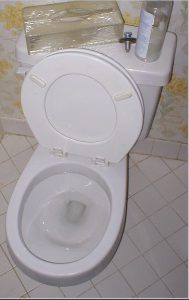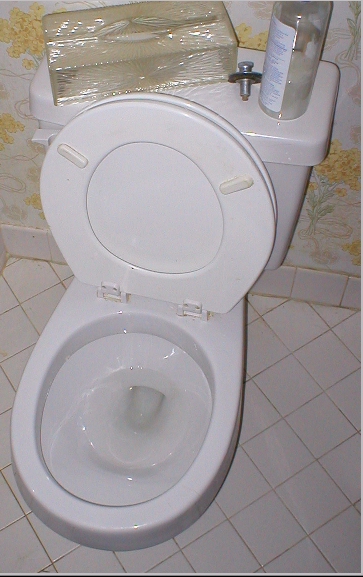
I decided to blog about this article for a few reasons… but I didn’t flag it as a #COVI19 Journal club because while it uses the current pandemic as a hook, this is a simulation and isn’t specific in any way to SARS-CoV-2. So “Can a toilet promote virus transmission? From a fluid dynamics perspective” is a conceptually straightforward attempt to model toilet aerosols (though I don’t pretend to understand the math). From which they conclude;
Faced with these alarming results, we advocate several safe procedures to adopt when using a toilet:
1. Put the toilet lid down before flushing, which can basically prevent virus transmission.
2. Clean the toilet seat before using it, since floating virus particles could have settled on its surface.
3. Wash hands carefully after flushing, since virus particles may be present on the flush button and door handle.This paper may also enlighten toilet manufacturers and prompt them to produce better designed toilets in which the lid is automatically put down before flushing and cleaned before and after flushing.
My problem with this paper (getting a lot of press from being on Colbert) is that I thought we knew all of this already? There’s a body of culture-dependent and culture-independent studies showing that toilets flushed without the lid spew aerosols all over the room… sometimes to an impressive distance. Here’s an example of one such paper from 1975! There’s no question in my mind that public toilets lacking lids are a potential health hazard (I turn my head away before flushing). And yes, I think this is worth considering in the context of SARS-CoV-2. The problem with SARS-CoV-2 is that we don’t yet (to my knowledge) have a good sense of how much of the virus found in feces is infectious, nor any real idea of what the infectious dose is anyway. So yes, flushing a public toilet results in “germs” being tossed in the air. But it is a way you could get COVID19? Much less clear. Abstract below:
Currently, a novel coronavirus named “SARS-CoV-2” is spreading rapidly across the world, causing a public health crisis, economic losses, and panic. Fecal–oral transmission is a common transmission route for many viruses, including SARS-CoV-2. Blocking the path of fecal–oral transmission, which occurs commonly in toilet usage, is of fundamental importance in suppressing the spread of viruses. However, to date, efforts at improving sanitary safety in toilet use have been insufficient. It is clear from daily experience that flushing a toilet generates strong turbulence within the bowl. Will this flushing-induced turbulent flow expel aerosol particles containing viruses out of the bowl? This paper adopts computational fluid dynamics to explore and visualize the characteristics of fluid flow during toilet flushing and the influence of flushing on the spread of virus aerosol particles. The volume-of-fluid (VOF) model is used to simulate two common flushing processes (single-inlet flushing and annular flushing), and the VOF–discrete phase model (DPM) method is used to model the trajectories of aerosol particles during flushing. The simulation results are alarming in that massive upward transport of virus particles is observed, with 40%–60% of particles reaching above the toilet seat, leading to large-scale virus spread. Suggestions concerning safer toilet use and recommendations for a better toilet design are also provided.
